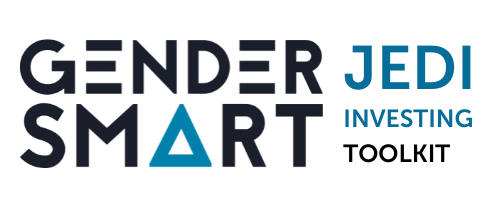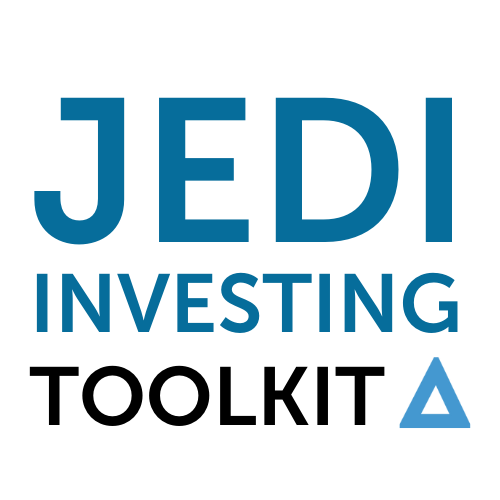JEDI Investing FAQs
If you have a question we haven’t answered below, get in touch.
-
JEDI stands for Justice, Equity, Diversity and Inclusion. It is increasingly being used to reflect a deeper, rigorous and intersectional approach towards embedding diversity, equity and inclusion in one's organisation, strategy, and investments. One lens is racial/ethnic justice or its regional equivalent, others include sexual orientation, socio-economic status, and age. Given the inherent complexity of the subject, there isn’t a perfect framing that works for everyone.
-
In this first phase, GenderSmart and JEDI working group advisors have focused on the incorporation of a gender lens alongside racial and ethnic justice (or the local equivalent) in investment decision-making. Other forms of diversity and social exclusion and under-representation are also part of what it means to have a JEDI lens. We acknowledge that racial/ethnic diversity is one form of lived experience and identity, with others to follow in due course.
JEDI investing is in large part about who is investing, who receives investment, what results occur, how investments/investment terms are structured and how those decisions are made. It covers gender, racial and ethnic diversity at the ownership level, governance, leadership, decision making, employment, value chains, and products, services, and customers. It is also about power dynamics and engagement.
JEDI can also mean different things depending on the country or region. In Australia, for example, it refers to indigenous Aboriginals; in Africa it could be a marginalised ethnic group; in Europe it could be refugees. In the Global North, high impact strategies may include enhancing racial diversity at the investment team or fund manager level, while the Global South perspective often focuses on expat versus local founders.
This broad range of definitions, alongside the breadth of potential toolkit users, is why we have not been overly prescriptive or specific with recommended actions. Instead, the goal is to equip potential investors with a common code and language to map out their JEDI investing strategies and approaches.
-
There is a compelling business case for integrating gender and JEDI throughout the investment process - from cognitive diversity on investment teams, to opportunities in underserved markets. However, we also urge the field to move beyond the need to “prove” the financial benefits of diversity.
The connection between financial rewards and diversity can only establish correlation, not causation, and thus can never serve as definitive proof. It can also often be countered with other, similarly correlative data.
Besides, after over two decades of making the case, none of the evidence or arguments seem to be enough. No-one is asking for “proof” that all-white-and-male teams and boards are good for business.
Instead of simply looking to increased financial returns, progressive leaders are embracing a broader vision of success that encompasses learning, innovation, creativity, flexibility, equity, and human dignity.
-
All actors can apply a JEDI lens to their work and practices, but the primary users of this toolkit are intended to be allocators, intermediaries and other investment influencers. This includes public and private market allocators, family offices, private equity/venture fund investors, foundations and also includes lawyers, consultants, gender experts, and other social justice experts.
-
Mainstream investors tend to look at JEDI through their existing DEI/sustainable investing efforts, or wider diversity and women's empowerment buckets. There is also an increased and intentional focus on racial justice investing from a many mainstream banks and financial institutions.
On the other side of the spectrum, impact investors and philanthropic actors tend to prefer the frame of social justice and equality investing. These strategies include funding underrepresented funds, organisations or entrepreneurs, and investing specifically in critical consumer services that directly benefit underrepresented population segments.
-
No, they are interconnected and there is no opportunity cost to adding a JEDI lens to an existing gender lens investing (GLI) strategy. Rather, this is about placing a deeper emphasis on intersectionality within gender equity, and looking at gender across dimensions of race, class, and ethnicity. It is also about addressing power dynamics across gender, racial, and socioeconomic divides.
JEDI investing builds on the momentum of GLI, and is not a distinct asset class but an investment approach that cuts across all asset classes.
-
The JEDI Investing Principles were co-created by members of the Working Group with the vision of broad and wide applicability. The goal is to provide a harmonised way of thinking about JEDI investing and equip allocators and intermediaries with a framework for their strategies and approaches.
The Principles were designed to be non-performative and move beyond box-checking, ultimately becoming part of business-as-usual planning cycles. They can also be used to inform internal frameworks and policies, and eventually into legal documentation as they become more widely adopted.
-
Check out the case studies - more will be added over time.
-
We’ve compiled an extensive directory of ecosystem resources, analysis, and data.

